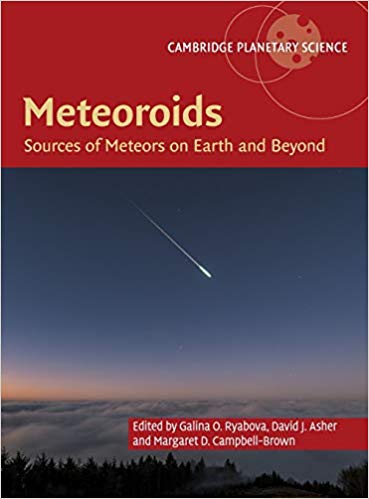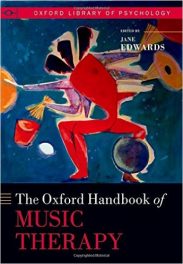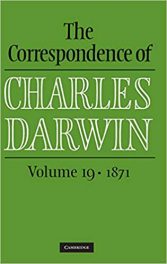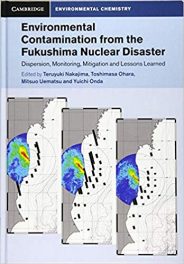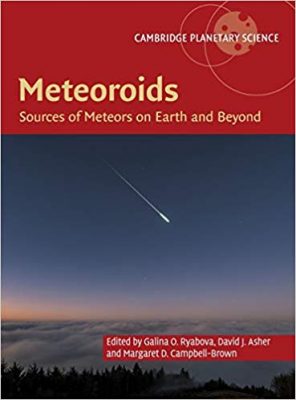 (This is part of the 25 books (so far) comprising the Cambridge Planetary Science Series)
(This is part of the 25 books (so far) comprising the Cambridge Planetary Science Series)
Editors: Galina O. Ryabova, David J. Asher, and Margaret D. Campbell-Brown
Publisher: Cambridge University Press – 306 pages
Book Review by: Sonu Chandiram
While this book has been written for advanced students and researchers, this book is accessible to anyone curious and interested enough about phenomena in the sky in our Space Age. Here are some questions discussed in this guide to the central topics of meteor science:
- What are the physical and chemical compositions of meteors, meteorites, meteoroids?
- What are the most significant past and most recent observations of these bodies?
- What are the ongoing theoretical developments, and their practical implications?
- What are the future avenues of research in this field?
- What are the risks posed to spacecraft, and the Earth?
- What insights have been gained from observing meteor flight phenomena?
- What do laboratory analyses of recovered material that hit the ground, reveal?
- What are the study findings on the evolution of meteoroid showers and streams?
Forty-six specialists on meteors and meteoroids (astronomers, mathematicians, physicists, planetary and space scientists, software developers, etc.) in 18 countries – Canada, Czech Republic, Finland, France, Germany, Japan, the Netherlands, Norway, Poland, Russia, Slovakia, Spain, Sweden, Switzerland, Ukraine, the United Kingdom, the United States, and Vatican City-State – authored the 12 chapters of this book, listed below for your overview:
Introduction – Meteor Astronomy in the Twenty-First Century
- Part I – Meteor Physics
- Modeling the Entry of Meteoroids
- Physical and Chemical Properties of Meteoroids
- Part II – Meteor Observations on Earth
- Radar Observations of Meteors
- Meteors and Meteor Showers as Observed by Optical Techniques
- Part III – Meteors on the Moon and Planets
- Extra-Terrestrial Meteors
- Impact Flashes of Meteors on the Moon
- Part IV – Interrelations
- From Parent Body to Meteor Shower: The Dynamics of Meteoroid Streams
- Asteroid0Meteroid Complexes
- Minor Meteor Showers and the Sporadic Background
- Interstellar Meteoroids
- Part V – Hazard
- The Meteoroid Impact Hazard for Spacecraft
- Impact Hazard of Large Meteorites and Small Asteroids
“Meteors are the light, ionization, sound and other phenomena produced when meteoroids collide with a planetary atmosphere,” the editors write in the Introduction to this book.
Detailed distinctions between meteors, meteoroids, and asteroids are discussed in this and other parts of this book in terms of size and other characteristics. I urge readers to study and understand the explanations of such distinctions.
This is a very important, highly useful book for all, given the importance of acquiring knowledge about meteoroids and other phenomena, as we continue to explore space today, more broadly and deeply than ever before .
Editors:
Galina O. Ryabova is Principal Researcherat Tomsk State Universty. Her research interests include the mathematical modeling of meteoroid streams and interrelations in the asteroid-comet-meteoroid complex. She has served on the Organizing Committee of the International Astronomical Union’s Commission on “Meteors, Meteorites, and Interplanetary Dust,” and is a council member of the International Meteor Organization.
David J. Asher is Visiting Research Fellow at Armagh Observatory and Planetarium, whose interests include solar system dynamics. His work with Robert H. McNaught brought the Leonid meteor storms of 1999-2002 to public attention worldwide. He served on the Organizing Committee of the International Astronomical Union’s Commission on “Meteors, Meteorites, and Interplanetary Dust” Commission, and, through his long involvement with the IMO, maintais extensive links with the active amateur meteor community in many countries.
Margaret D. Campbell-Brown is Associate Professor at the University of Western Ontario and Vice President of the IAU’s Commission on “Meteors, Meteorites, and Interplanetary Dust”. Her research focuses on the origin of sporadic meteoroids and their physical and chemical properties, and her telescopic tracking system for meteors has produced unprecedented data on the fragmentation and dynamics of small meteoroids.

